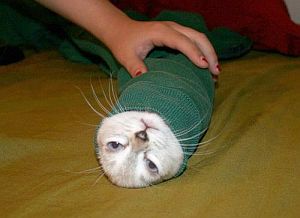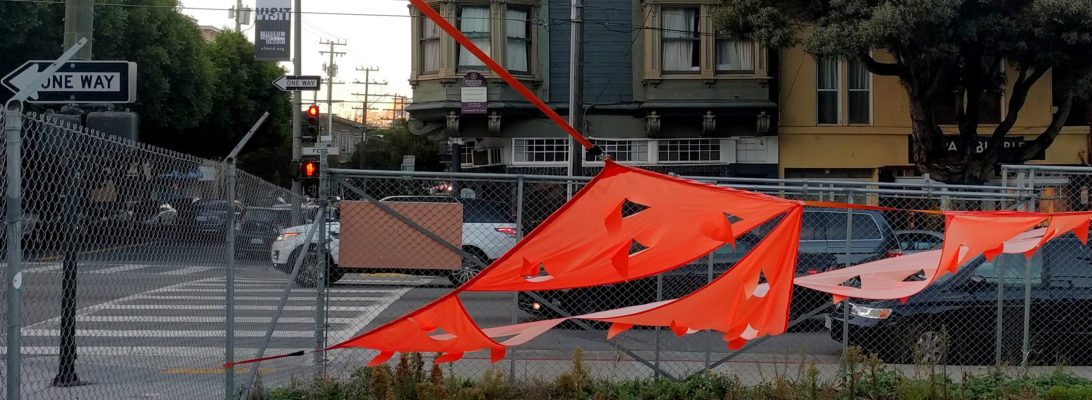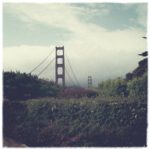Today was yet another slog through the steaming pile of organic horse manure that life has been throwing our way recently. It started off innocently enough, with a breakfast of hardboiled egg with peanut butter & banana and cheddar cheese. I sat down at my laptop, balancing it carefully on my lap with my bad foot propped up on a squishy pillow. Avoiding the emails I had to return, I decided to spend some time browsing my RSS feed of jobs. What I learned from this endeavor is is that cheese and hardboiled egg are too gluey to eat together in one mouthful, and that no one is hiring or everyone’s on summer vacation. Today I will not become an engineer, computer programmer, or an executive assistant/slave at a non-living wage.

Lovely hardboiled egg photograph via overthehillandonaroll
I was preparing for a networking meeting when I was thrown off track by the unwelcome news that my partner’s job is not looking good. Breaking down into panic is not a great mental state to be in when you’re attempting to finish a cover letter – its hard to muster the cheery optimism and self-important flourish needed for such tasks when your mascara is pooling around your eyes. Looking like a forlorn raccoon is also not a good look when meeting a potential job contact. I also realized that if he went back to DC for a meeting next week, I would be stranded in my apartment. I have meetings, physical therapy, pre-op doctors appointments (for getting the hardware out of my foot) and other engagements practically every day next week.

Yup that’s my foot – and my four inch steel extra foot bone
Since I can’t get myself and my scooter down the stairs and I can’t drive, I had the realization there’s actually not a single person I know here well enough to call upon for help. This is a sobering though – as time goes on, I’m beginning to realize that community (friends, family, neighbors) is quite possibly the most important part of your life. You can have a perfect apartment, perfect car, perfect job, and a perfect yard – but if you don’t have someone to leave keys with when you’re on vacation, or someone to call if you end up in the hospital and your bike is lying in the street and your dog is home alone, or if you lose your job and you can’t make rent – things can go bad a lot harder, a lot faster. We quite honestly don’t have a “Plan B” – if J has to go to DC, there is no plan, no backup plan, and no backup-backup plan for how I will eat, get to the doctor, and get in and out of the apartment on my own. Not only does this make me realize how lucky we are J works from home, but also how important it is to me to grow a community – and when I find one, not to leave it.
The horrible excuse for an extra foot – on four wheels – I’m using these days
We also spent the fourth by ourselves – not just most of the long weekend, but also the holiday itself. Eventually, we decided to go for it and try and do a traditional holiday BBQ with corn and hamburgers. Unfortunately, we don’t have a yard, deck or BBQ, and the public grills are few and far between – you can imagine how mobbed good picnic spots are on a public holiday in a major city!

Driving around with our little canvas LL Bean Boat’n’Tote full of patriotic foodstuffs, I was dismayed to see giant groups grilling at every park we checked out. I was so jealous of the large gatherings of friends and family, plumes of smoke drifting from their grills, probably claimed at nine that morning. Realizing that you don’t have anyone to celebrate a holiday with – even though you tried – and realizing that you don’t know anyone well enough to be on their must-call list over a long weekend is kind of sad. Its probably easy to classify this as a pity party, but after ten months of 24-7 closeness with one person – with a healthy dose of health problems, financial precariousness, emergencies, and isolation thrown in – it would be crazy not to want to socialize.

After realizing our chances at finding an open BBQ spot anywhere near San Francisco dwindled, and after watching the clock tick toward five PM, we finally hit upon the idea of driving up the slopes of Mount Tamalpais to find a picnic area there. As we drove up the flanks of the treelined mountain, the vegetation changed from the dry coastal scrub of the headlands to a more close and richly green cloak of evergreen trees and oaks; casting long afternoon shadows across the curving road. My mood lifted as we ascended, and cracking open the window, I realized the temperature had risen as well. The dry heat of the mountainside, away from the chill refrigerator winds of the Pacific coast, released the fragrant scent of the fir and spruce trees. I suddenly missed Maine terribly, the warm breeze wafting the familiar scents of pine and evergreen needles into the car.

Getting off the memory train and returning to this afternoon, I did manage to wash my face off, put some eye drops in an make a presentable appearance at my meeting. Afterwards, off to the gym to do a gimp workout – flop onto the mat, do a bunch of leg lifts and ab exercises and then lift weights. Also, wear iPod and play house remixes at top volume while averting eyes downward because it reduces the chances of anyone talking to you, asking about your injury, looking at your leg scooter and saying “That’s a neat device, better than crutches, I betcha! Ha ha ha!”, or inflicting their injury story on you (surprisingly, it never makes me feel better to hear about how you still can’t bend your ankle).

This image was the THIRD Google image search result for “burrito” – probably due to my creepy Google geolocation of San Francisco, but I love it and it stays. It’s via SFIST.
Unfortunately, a planned meeting afterwards fell through, but the one good part of the day soon materialized took the form of a wondrous, majestic, savory burrito. A burrito filled with pork stewed in chile verde, tomatillos, cilantro, tomatoes, rice, onions with a side of yucca and some roasted red pepper salsa. I had been craving a burrito for soooo long and having a badly mediocre, starchy and boring burrito a week earlier had only intensified the longing. After the burrito roll from heaven and a frosty Prohibition ale, I was feeling better about life.











